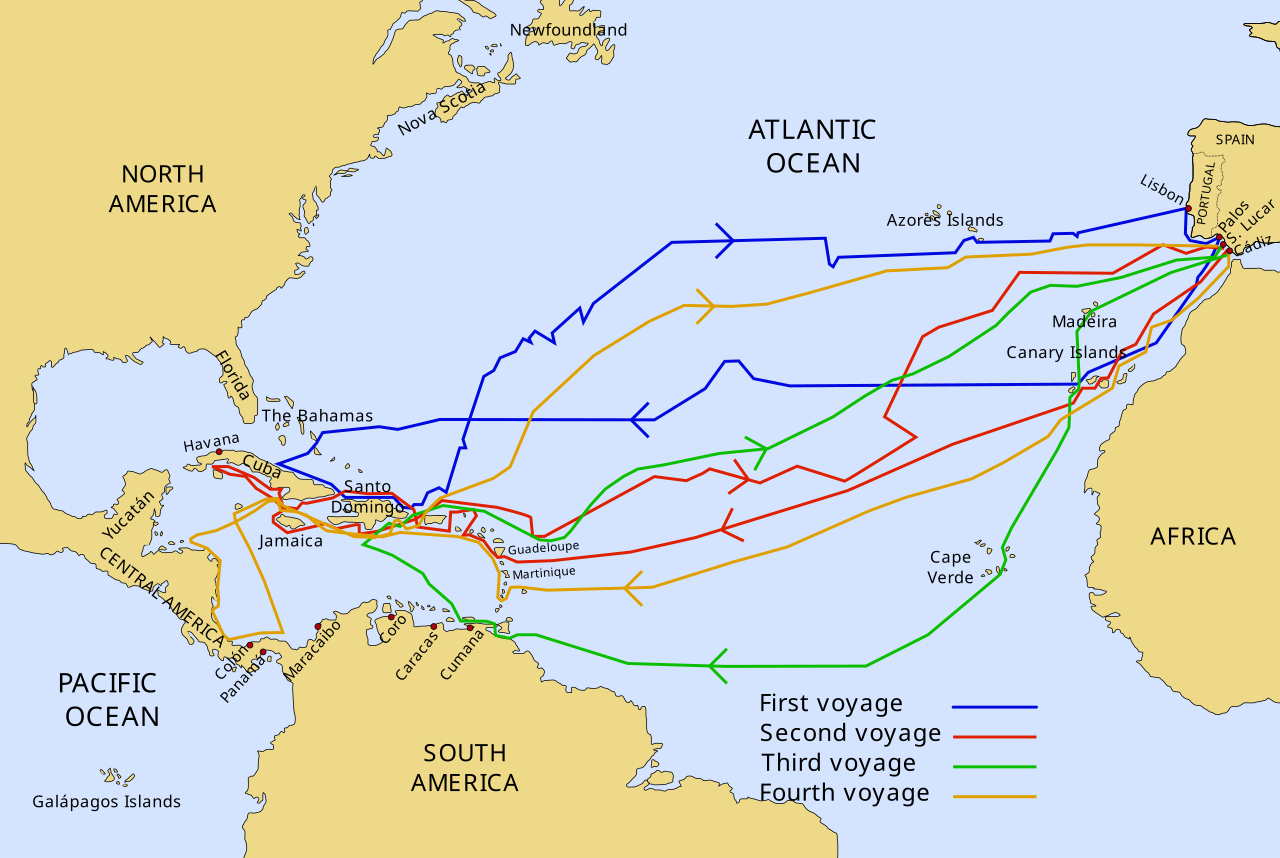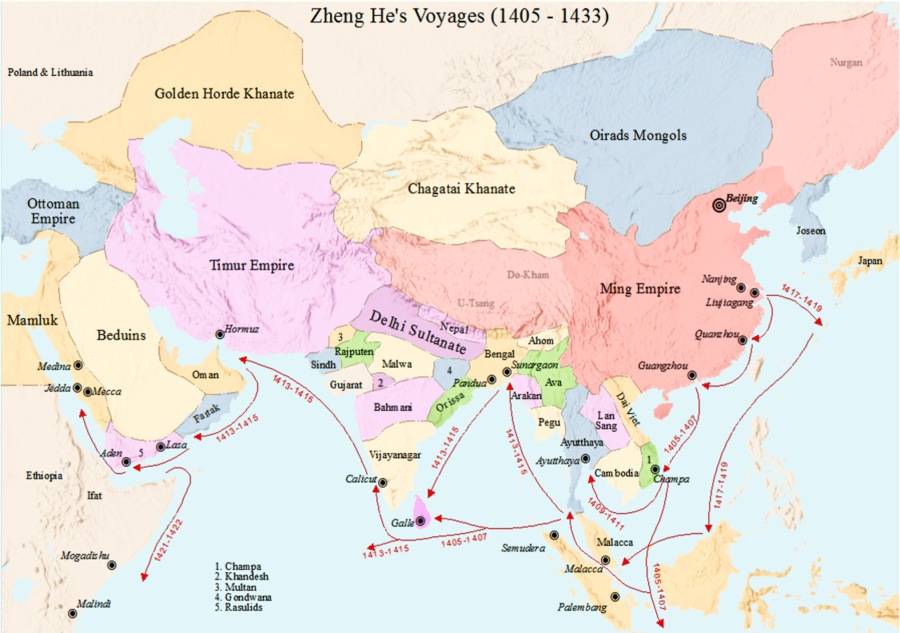Columbus and Navigation
I remember how excited I was when first learning that Columbus discovered America. It seemed so adventurous and daring . . . but that was decades ago. Today, my goal is to draw a parallel between 1492 and the world in our times. Choosing a starting point is quite difficult because my Swedish genes nag me to mention that the Vikings for sure got to North America long before Columbus.
Columbus was born in the Republic of Genoa in 1451. He had three brothers, one of whom, Bartholomew, ran a cartography business in Lisbon. Columbus helped his brother but most of his early life was spent on ships that were carrying valuable cargo. He traveled extensively and though not scholarly, he made copious margin notes in the books he did read, like those of Ptolemy and Marco Polo.
My experience as a tourist is that at each resting point, one meets other travelers who may or may not have come from the same direction, meaning, for example, one might be in Athens or Istanbul but the people one meets may have come from the east rather than the west. One exchanges stories about the road conditions, dangers, restaurants, and perhaps languages, history, and cultures. Sooner or later, one hears something that triggers a synaptic response and a desire to probe further.
Since the Silk Road was well established in the 15th century, it is very likely that Columbus had fairly detailed knowledge about places to the east but speculations were rampant as to whether or not one could reach Asia by sailing west, not just in the mind of Columbus but with others as well. Columbus made some serious miscalculations about the size of our Planet and was roughly a third shy of reality.
Most of us know the rest of the story because we learned it in school and have probably seen films depicting the life and voyages of Columbus and his financiers, Queen Isabella and King Ferdinand.
Zheng He
One of my early Substack posts referenced the famous Chinese admiral whose voyages dwarfed those of Columbus. Zheng He was a Muslim admiral whose first fleet consisted of 317 ships and a crew of 28,000. They went from port to port, generally sticking close to the coastlines as they sailed through Southeast Asia and as far as the Eastern coast of Africa. The ships were loaded with gifts and items of trade and diplomatic missions were established along the route. The Ming Dynasty sponsored seven expeditions. The missions could be considered economic and political since no attempts to claim land or colonize occurred though some envoys were brought to China along with exotic animals, the giraffe being the most celebrated.
Some expatriated Chinese already lived in several of the areas visited and some crew staffed the new missions, but the goal was mercantile in nature and mostly non-violent except for encounters with pirates and a land war in Ceylon (now Sri Lanka).
There were three emperors during the span of Zheng He’s voyages. Sponsorship ended and tales of the expeditions were more or less muffled.
Church and State
What is noteworthy is that much of the area covered by Zheng He embraced the Islamic faith, not entirely, of course, but it is clear that Indonesia, except for Java, the Arabian Peninsula, and much of East Africa are Moslem. Likewise, much of the area visited by Columbus is Catholic. However, as discussed in a recent post, in the case of Columbus, there were Papal grants of land and sovereignty whereas no such conquests or seizures were initiated by the Chinese. This said, tributes were expected from the foreign countries.
Columbus did not explore much of continental North America, but, as we know, the Pilgrims came later and brought Protestant Christianity with them. This may become the subject matter of a Thanksgiving post!
Today
The parallels that jump out are that when the West wants something, it tends to use force. Whether seeking gold, oil, rare minerals, or control over thought, it is ruthless and depends on might over what is right. The pattern is so out of control that this abuse of power is now being directed at citizens rather than foreigners who have come to enjoy more financial and political security than native born residents.
China continues to engage in deceptively friendly economic exploitation by building dams and power plants, airports and harbors, roads and agricultural projects, all with conditions that cripple the economies of the host countries that cannot afford to pay back the loans . . . unless they surrender natural resources in exchange for interest payments on the debts.
Where Does it Lead?
If trends remain the same and are projected forward into the future, religious conflict and exploitation by the powerful will cripple civilization as we know it. We see the seeds and many have germinated and will become stronger unless creative minds devise alternatives to the current political and economic objectives.
The history of colonialism is that the intruder will eventually be expelled due to a surge of public sentiment. This is sometimes followed by nationalization of properties, industries, and natural resources, meaning the “investments” of the foreigners are seized without compensation. This, however, only works if a national identity is crafted and a charismatic leader emerges who arouses a desire to reclaim what is rightfully part of the country’s identity and resources. We do see such movements gaining momentum and can thus expect changes that will interfere with corporate and political interests.
On the other side, we see conflicts between cultures holding different perspectives and values so the lives of many people who expatriated and might be disrupted. This is happening in Europe and the scale is likely to increase rather than abate. Every country is handling this differently and the repercussions will be enormous.
So how far back can these measures go? Historically, various ethnic and religious groups were targeted. The Inquisition is one example and the Holocaust is another. Finding peaceful and humane solutions is highly desirable. We can compare the Swedish strategy that involves hefty payment to non-Swedish ethnic groups to leave, $34,000. Germany paid roughly $1200 to each Afghan who was involuntarily deported. If we look at the Swedish figure, it must reflect the social cost of welfare payments, education, and healthcare so the burden on taxpayers has to have been enormous if it is cheaper to repatriate people than to subsidize them. There are humanitarian arguments for why aliens should be allowed to stay regardless of the legality of their entry, but there is a tipping point and it has been exceeded in some countries.
More Parellels
If we play it forward just a bit more, let’s try to imagine that we develop the capacity to colonize other planets? What if those planets are actually already inhabited? How will we behave?
Copyright by Dr. Ingrid Naiman 2024 || All Rights Reserved
For permission to quote, please contact the author. Sharing via e-mail and posting links are welcome so long as the author and source are properly cited. Reprinting is strictly prohibited.
My line of herbal remedies and essential oils can be found through this link. Bioethika International is the main site with a complete list of available herbs. The other active e-commerce enabled sites are Ayurvedic Bazaar, AdrenalHerbs.com, ImmuneFormulas.com. MoldHerbs.com has the herbs I used to recover from very serious mold exposure. ToxicTeeth.com has herbs for chelation. My book is available at seventhraypress.com.
Image Credits:
Columbus: https://upload.wikimedia.org/wikipedia/commons/thumb/3/38/Viajes_de_colon_en.svg/1280px-Viajes_de_colon_en.svg.png
Zheng He:
https://en.wikipedia.org/wiki/Zheng_He
This Substack column was launched in mid-January 2023. This is post #191. Paid subscribers are greatly appreciated, but only 10% of readers are paid subscribers. Maybe monthly or annual commitments are too much for some people so if you would like to make a one-time donation, you can use this link. Please note, all subscriptions and donations are going through the Institute for Invisible Epidemics, and will appear on your credit card as iie-academy.
Substack is a reader-supported publication. To receive new posts and support my work, consider becoming a free or paid subscriber.





ANNOUNCEMENT: Ingrid passed away peacefully in her house on Jan 23, 2025. She will be remembered by her beloved friends.